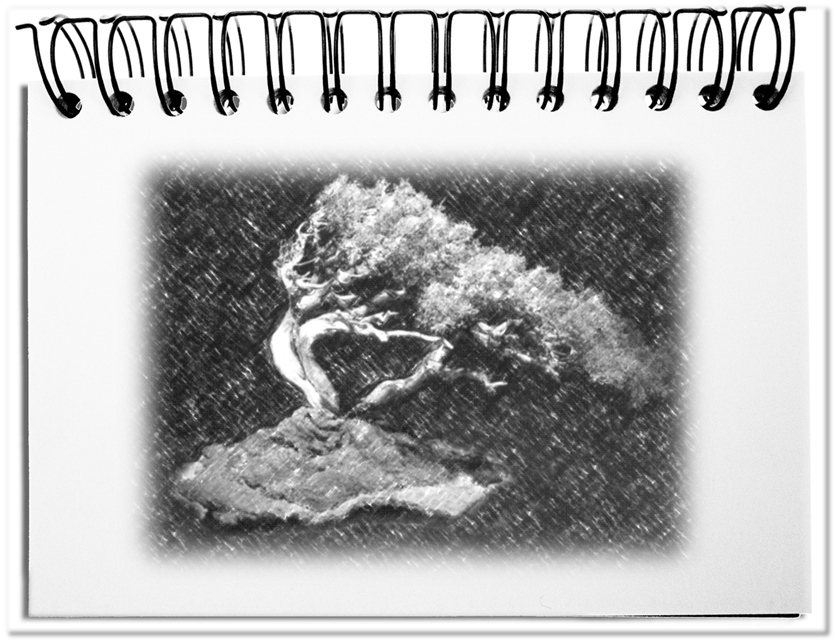A bonsai is the Oskar Matzerath of trees. Even though Oskar decides at the age of three to stop growing, it is a bonsai gardener who suppresses further growth. Similar to a potter who shapes the soft clay into the desired form, the gardener trims the root, the leaves, and especially the buds. He also uses a wire to force the tree to grow into a specific shape. With the right care, bonsais delight their owners for over a thousand years. If these little trees could talk, we would know whether they love this intensive care and long life, or whether regular curtailing of their buds makes them as unhappy as the employees whose personal efforts are cut down by old-fashioned managers.
Since a tree kept small never reaches the yield of a large one, employees should be enabled to contribute their potential. However, this is only possible if the following aspects are not cut back.
- Meaningfulness
When considering the meaningfulness of an activity, we better forget the advertising brochures with the always same blank purport: e.g., a world without xxx (whatever); a computer on every table; being connected with friends; a better life. The job must match the values of the employees so that they can realize themselves. This is also true for managers, but they need employees to get their intentions implemented. To achieve this, they use their formal powers and ignore the interests of employees so that they act in the name of their superiors – which inevitably frustrates and slows down the employees. To achieve more, superiors and employees must align their intentions. When managers know what employees can do, encourage them in their efforts, and deploy them where they provide the most to the organization, surprising results are possible. - Creative leeway
The necessary freedom to develop is varying from one to the other. A bonsai does not need much space to develop into an impressive, albeit small tree. In business, however, it is all about yield. It requires space. When employees get fully involved, they deliver more but also different things than the decision-makers expect – sometimes they create even results that are not desired. This is where the entrepreneurial scissors are applied and limit the employees’ scope for action. It is not only valid to the clerks, but also the entire middle management. As a result, the remaining breathing space is so small that nobody gets motivated. To ensure that an agile working environment is not kept artificially small, the individual freedoms must be preserved, even if this results in duplication of work, does not always produce useful results, and the employees may not have time for what the particular superior wants. - Development opportunities
The existence of the employees is limited to the duration of their employment with the company – previously the whole of their working life, nowadays 18 months to a few years. The chance of becoming a Methuselah is exceedingly small. Accordingly, the development paths are much shorter. It is not the development based on perseverance and sustainability that creates commitment but instead focused on short-term results. The motto for today’s pyramid climbers is: quickly one step up, away rapidly. In order to slow this opportunistic fluctuation down, employee development is not fostered or even prevented. If there are no prospects for personal growth, the best people are pushed out of the company. They have no choice but to look elsewhere for favorable opportunities – the technical term is brain drain. - Support
The flattening of structures with holacratic, temporary teams deprive managers of their raison d’être – the leading of employees. After the persons in charge lead themselves, make decisions on the spot, and eventually present and take responsibility for the results, for the superiors, nothing else remains than the support function. The larger a company, the more difficult it is to keep track of the diverse interests. It is hard for active employees to react to suddenly arising tasks because they are attentive to the task at hand. The manager can take on the role of clearing up threats, far-reaching difficulties, and supporting employees in their jobs – e.g., imparting information and connections; making contacts; procuring resources. In this setting not the individual but the team reaches the finish line.
Bottom line: In the times when the motto was, knowledge is power, and no IT could then deliver information to everyone, everywhere and at any time, the steep hierarchies based on the division of labor made sense. Today, the jungle of decision paths and power structures no longer fits into the fast-moving world of VUCA. Correspondingly, the cutting down of employees no longer works. A look at evolution shows that the fauna and flora have developed abundantly and sustainably with a lot of profligacy and redundant development. Only the interventions of man disturb the balance. In the same way, bonsai management is counterproductive. Effect emerges when employees can fully unfold while finding meaning in their work, having sufficient creative freedom (some more and others less), being able to develop and being actively supported by the remaining managers. Bonsais do not become an agile and sustainable jungle – various trees and bushes, which conquer their space and make maximum use of it. The bonsai shows the disadvantages of curtailing employees and is therefore the ideal metaphor for dedication nipped in the bud.


